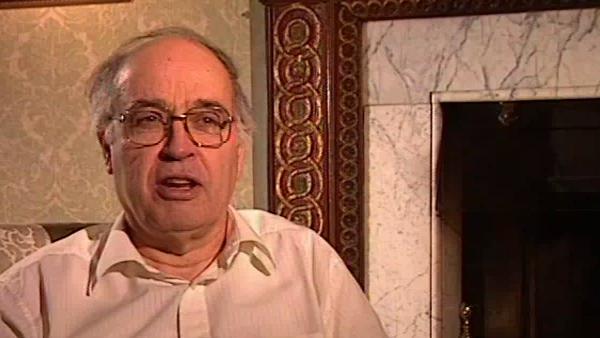Well, I… my father worked in the Sudan, in fact his father had worked in the Sudan before him, so it was long established. And so we lived in Khartoum, which is a rather small community as far as the sort of Western community is concerned. So for example, I went to a very, very small school called The Clergy House. It was run by the Church, and I think there were 25 pupils altogether in the school, of all ages and I was there from, you know, five until the age of 12. So it was a very, very small amateur sort of kind of job in a way, and I’m sure it would have fallen foul of all the educational theories about the right kind of teaching you could have and so on, but I seemed to survive and it was a rather unusual experience. And then at the age of… well… the age of 12, where I would have gone at the age of 12… they didn't take them beyond that age and I had to go to a secondary school. We tried out for a short while a secondary school in Khartoum run by the Italians called the Comboni College, but that turned out to be a disaster. I survived only four days there. It was quite different kind of school, big… I think they used a lot of Arabic, it was more an Arabic medium as well. So they pulled me out of that, sent me back to The Clergy House for another couple of years – it was during the war so you were limited – and then finally, in 1941, I suppose, they decided to send me to a school in Cairo – English school, English type school which in fact my father had been at before – called Victoria College. And so I spent the next four years there at this school, and that was… that’s a sort of, you know, English type boarding school, but a very interesting school because a lot of students of different nationalities were there. We had Egyptians and Greeks and Armenians and a whole of range of Mediterranean people. So that was an interesting experience. And that was, you know, again a respectable school, where there were good… good teachers, nothing, sort of, tremendously outstanding, but I got a good grounding, I think, and at that school I was, for various reasons, I was put a couple of years ahead of my age. I wasn't a great prodigy necessarily, but I was a bit more advanced, so I was always two years ahead and I suppose that meant I started things earlier. So I remember for example, I'd start… they started doing calculus when I was about 13. So I had a fairly good grounding mathematically. They had some quite good teachers, and so that's my memory of that time really.





